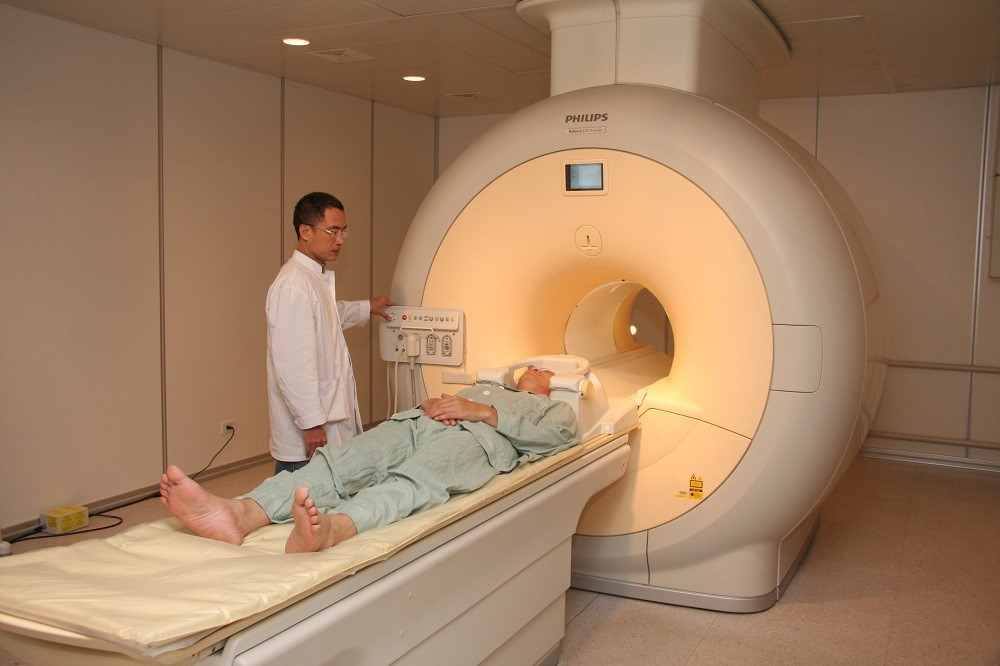I read the information in the article "Going to the emergency room because of the habit of many Vietnamese people when they have a dull headache", and realized that many people are subjective when they have a headache, often trying to endure it until it passes, or buying painkillers to take without thinking about the serious consequences. So what can cause headaches, what are the warning signs of danger, doctor? (Quynh Trang, Hanoi ).
Master, Doctor Chu Van Dung, Department of Internal Medicine, Neurological Intensive Care, Viet Duc Friendship Hospital, consults:
Headaches are a very common symptom, with many causes. According to the World Health Organization, about 50% of adults have at least one headache a year.
Headache is a phenomenon of pain spreading to any area in the head and face due to stimulation of pain nerve receptors. Most of the brain parenchyma and ventricular structures are not sensitive to pain. Pain-sensing structures in the head and face include: skin, subcutaneous tissue; head and neck muscles; extracranial arteries and skull periosteum; microscopic structures of the eyes, ears, nasal cavity, and maxillofacial region; dural venous sinuses and branches, cavernous sinus area; intracranial dura mater; large arteries.
Most headaches are mild and not dangerous. However, some headaches are symptoms of medical conditions that can be life-threatening, including:
- Intracranial pathology: cerebrovascular pathology (ischemia, hemorrhagic stroke, vasculitis, vascular malformations, venous sinus thrombosis, ...); inflammation due to infection (meningitis, encephalitis, brain abscess, ...) or non-infectious (autoimmune, cancer, chemical); traumatic brain injury; brain tumors and mass lesions; increased intracranial pressure syndrome; Chiari malformation type I; ...
- Extracranial pathology: eye, ear, nose and throat, dental, carotid artery or extracranial vertebral disease (arterial dissection).
- Systemic diseases: hypertensive crisis, high fever, hypoxemia, hypercapnia, sepsis, viral infection,...
Studies show that more than 95% of headaches are benign. Headaches caused by serious medical conditions account for a small percentage, but few people can tell which ones are serious. There are some warning signs in people who suffer from headaches, including:
- Neurological symptoms or signs (eg, altered consciousness, numbness and weakness of limbs, diplopia, papilledema, facial distortion, difficulty speaking, difficulty understanding speech, etc.).
- Severe hypertension.
- Patients with immunodeficiency or cancer.
- Headache with stiff neck.
- Thunderclap headache (severe headache that peaks within seconds).
- The patient may have seizures, personality changes, confusion or fainting.
- Headache increases when coughing or when exercising.
- Systemic symptoms (eg, fever, weight loss, etc.).
- Headache that gets worse or has a different nature than before.
- Headache onset after age 50.
If the headache is accompanied by any of the above warning signs, the patient should immediately go to a medical facility for a full evaluation.

Brain MRI to find the cause of headaches. Photo: BVCC
Most benign headaches can be diagnosed through a history and physical examination without the need for testing. However, some serious conditions may require urgent or immediate testing (when warning signs are present).
Magnetic resonance imaging (MRI) of the brain provides the most accurate assessment of brain images, and computed tomography (CT) of the brain may also be used. Cerebral angiography (MRA or CTA) may be performed to assess vascular status when suspected.
Additionally, if meningitis, subarachnoid hemorrhage, encephalitis, or any cause of meningitis is suspected, a lumbar puncture and cerebrospinal fluid examination should be performed.
Other tests and investigations (eg, intraocular pressure measurement, funduscopy, blood tests, ENT endoscopy, etc.) may be performed when symptoms suggest, depending on the situation.
 5 things to do when you have bad breath
5 things to do when you have bad breathSource



































































































Comment (0)